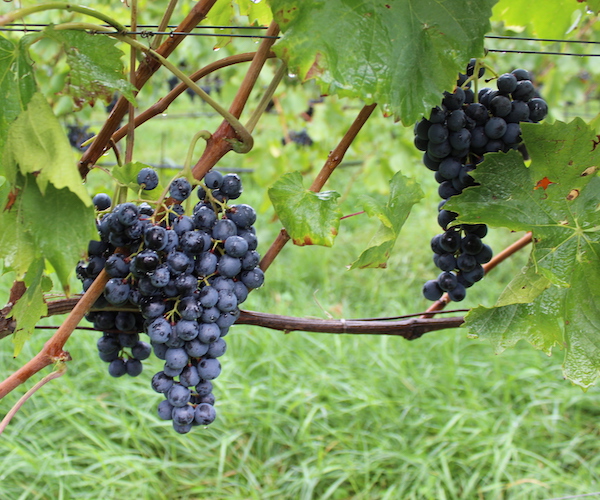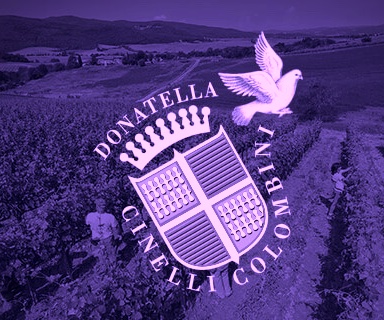Napa Valley is one of the smallest wine regions in the world. At half the size of Champagne, it measures just 30 miles in length and a mere 1-3 miles wide. Despite its small size, the valley’s terroir is highly diverse, with a myriad of microclimates, over 140 different soil types and dramatic variation from north to south and east to west. Master Sommelier John Szabo led a seminar on this topic recently at Taste Napa Valley in Toronto, with five wineries profiling the intriguing differences in their Cabernet Sauvignon.
Key to Napa Valley’s terroir complexity is its geology. Over two million years ago, the Pacific and Farallon tectonic plates collided. Their continuous grinding, combined with volcanic activity, created the San Andreas Fault and two mountain ranges which bracket Napa Valley. The Mayacamus Mountains to the west block off the cooler, marine influences of Sonoma County. This side has a cooler, wetter climate, with vineyards located on the foothills where the grapes ripen in the cool morning sun. The Vaca Range to the east protects the valley from the searing heat of the Central Valley. The climate here is hotter and drier. Vineyards are planted on steeper, rockier soils and bask in the warmer afternoon sun. The garrigue character of some Vaca mountain wines is due to the smaller gnarly trees and shrubbery that dot the mountainside.
The sea washed in and out from San Pablo Bay repeatedly over the years, creating more than ten alluvial fans as water carried gravel, silt and clay down both mountain ranges. Numerous incursions of the sea also deposited clay and sand onto the southern end of the valley. As a result, the lower valley has dense, slow draining clays, while the upper valley has more porous, faster draining soils. Vineyards on the more fertile valley floor produce intense wines with ripe black fruit. In contrast, the thinner soils of the mountain vineyards create fresher, more perfumed wines.
Temperatures vary dramatically between the top and bottom of the valley. Oceanic influences play a daily role here, with the hot Central Valley pulling cooling fog off the San Pablo Bay. Calistoga, at the north end, can be as much as ten degrees warmer than the cooler, windier Carneros area to the south. As a result, wines from the north end tend to be riper, with firmer tannins compared with the softer, more delicate wines of Carneros.
Spring Mountain District: North of the town of St. Helena, Spring Mountain District covers the northern and eastern slopes of the Mayacamus Mountains, at altitudes of up to 2,100 ft. Elevation and a cool climate translate into good acidity in the wines. Volcanic soils tend to dominate the northern half, with sedimentary soils in the south.
Cain Vineyards is located at the south end of the district, at elevations of 400-2,000 ft., placing the vineyards above the fog line. This extends their sunshine exposure, important given the cooler climate of the region, enabling them to harvest up to three weeks earlier to retain the perfume of the wine. Their vineyards are on sedimentary soil, with a higher clay content that retains relatively more water and nutrients.
Cain Five Red Blend 2010 (13.9%) – – Since the first vintage of their Meritage blend (‘Five Blend’) in 1985, Cain has intentionally preserved the brett yeast by not cold soaking the grapes. This elegant wine will therefore appeal to those who like a nose of barnyard and umami, intermingled with perfumed floral aromas. It has a lush palate of ripe dark fruit, with chalky tannins, earthy undertones and well balanced acidity![]()
Chiles Valley District: Opposite Spring Mountain District on the northeast side of the Napa Valley, the Chiles Valley District is a narrow appellation in the Vaca Mountains. Cooling breezes from the ocean do not reach this far inland, resulting in a more Continental climate. Elevations are high at up to 2400 ft. Cooler, wet springs give way to warmer summer days, but nights are chilly due to the winds.
Somerston Estate’s Priest Ranch vineyard is on the east side of this district, with elevations of 800-2,400 ft. During the cool nights, heat is retained by the soil because it is composed 60-70% of varying sizes of boulders, ensuring good drainage. This enhances the yield of their Cabernet Sauvignon.
Somerston Estate Priest Ranch Cabernet Sauvignon 2012 (14.9%) – The sixth vintage of this wine is sourced from 24 blocks of Cabernet Sauvignon on the property. Powerful and fleshy, it delivers juicy black and red fruit on a weightier palate, with spice and chocolate nuances against a backdrop of dry tannins that attest to its ageworthiness.![]()
Oakville District: This district is considered by some to be the benchmark district for Napa Valley Cabernet Sauvignon. A few miles south of St. Helena, it extends two miles in width. Vineyards in the western Mayacamus Mountains have lower elevations of up to 500 ft., with marine sedimentary soils. Those on the eastern Vaca side are on undulating hills of up to 1,000 ft. elevations, with deep red, soils caused by volcanic uplifts. The climate is warmer on this side, with morning fog and a moderate diurnal temperature shift.
Gallica, which Rosemary Cakebread launched in 2007, sources its grapes for Cabernet Sauvignon from two vineyards, one in St. Helena and one on the hillside of the Vaca Mountain. The latter, at 250-400 ft., receives frequent morning fog and can experience a ten degree diurnal shift in temperature. The soil is what Cakebread feels differentiate her wines, given the low Ph and higher acidity of the deep red coloured volcanic tuffs. This allows her to attain excellent acidity, with a minimalist approach to her winemaking.
Gallica Cabernet Sauvignon 2011 (14.1%) –Bright ruby red, with complex floral aromas, this wine combines power and elegance with a beautiful array of lush red fruit and silky tannins.![]()
Stags Leap District: Further south and five miles north of the town of Napa, Stags Leap District is one of the smallest appellations in the Napa Valley, situated in the foothills of the Vaca Mountains. It has a combination of volcanic soil deposits from the eroding Vaca Mountains and loam and sandy clay sediments from the Napa River. The area has classic valley floor weather, with fog rolling in and out from the San Pablo Bay creating an intense wind tunnel that shuts down vine development at the end of each day. Afternoons are warmed by the heat radiating off the bare rocks on the hillside.
Silverado Vineyards’ steep vineyards are situated on the backside of a knoll on the north east side, with western and northern facing slopes exposed to the afternoon sun. Instead of the more typical red volcanic soils, Silverado has white volcanic tufts that splinter when squeezed.
Silverado Solo Cabernet Sauvignon 2012 (14.4%) – Solo is Silverado’s top tier Cabernet Sauvignon. The grapes are picked and de-stemmed in the field in the middle of the night to preserve the natural acidity and freshness of the fruit. Red floral aromas and a lush palate of red stone fruit, follow with savoury herbs and licorice in this full bodied, extremely well balanced wine.![]()
Oak Knoll District: Located just two miles north of the town of Napa and bordered by Mt. Veeder to the west, this district is the coolest appellation in the Napa Valley, other than Carneros. The district’s most distinguishing feature is that it is located on the largest alluvial fan in the Napa Valley. Created by the water runoff from the mountains, the result is a porous top layer of gravel, silt and clay. The vine roots penetrate this layer to reach the underlying bed of clay, which retains water and allows the plants to sustain themselves during the longer growing season of up to eight months. A recurring pattern of morning and evening fog blows in from the San Pablo Bay, moderating the hot valley floor temperatures from 32 degrees during the day to 10 degrees at night. This allows the grapes to retain good acidity and freshness.
Silenus Winery is located in the middle of the Oak Knoll district. The soils of its vineyards are mineral rich and gravelly and the climate is marked by warm days and cool nights.
Silenus Cabernet Sauvignon 2012 (14.5%) – Ripe black fruit aromas give way to sweet raspberry and cranberry flavours. Baking spices, coffee, earthy notes and black pepper underpin this elegant wine, with polished tannins in the lingering finish.![]()
 Margot Ritchie is a Toronto-based journalist, whose articles focus on wine and culinary trends. A member of the Wine Writers’ Circle since 1997, she has travelled throughout many of the major wine growing regions of Europe and North America. These include Austria, France, Italy, and Portugal, as well as California, New York State and Ontario. Spirits, sake and beer are also highlighted in her writings, where her travels have extended to Scotland, Japan and the Czech Republic.Margot’s wine columns have appeared in Del Condominium Lifestyle, Elite Wine, Food and Travel, Modesty Magazine, International Women’s Forum (IWF) – Toronto Chapter Newsletter and the Portuguese Post . Margot also advises on private wine cellar management.
Margot Ritchie is a Toronto-based journalist, whose articles focus on wine and culinary trends. A member of the Wine Writers’ Circle since 1997, she has travelled throughout many of the major wine growing regions of Europe and North America. These include Austria, France, Italy, and Portugal, as well as California, New York State and Ontario. Spirits, sake and beer are also highlighted in her writings, where her travels have extended to Scotland, Japan and the Czech Republic.Margot’s wine columns have appeared in Del Condominium Lifestyle, Elite Wine, Food and Travel, Modesty Magazine, International Women’s Forum (IWF) – Toronto Chapter Newsletter and the Portuguese Post . Margot also advises on private wine cellar management.








